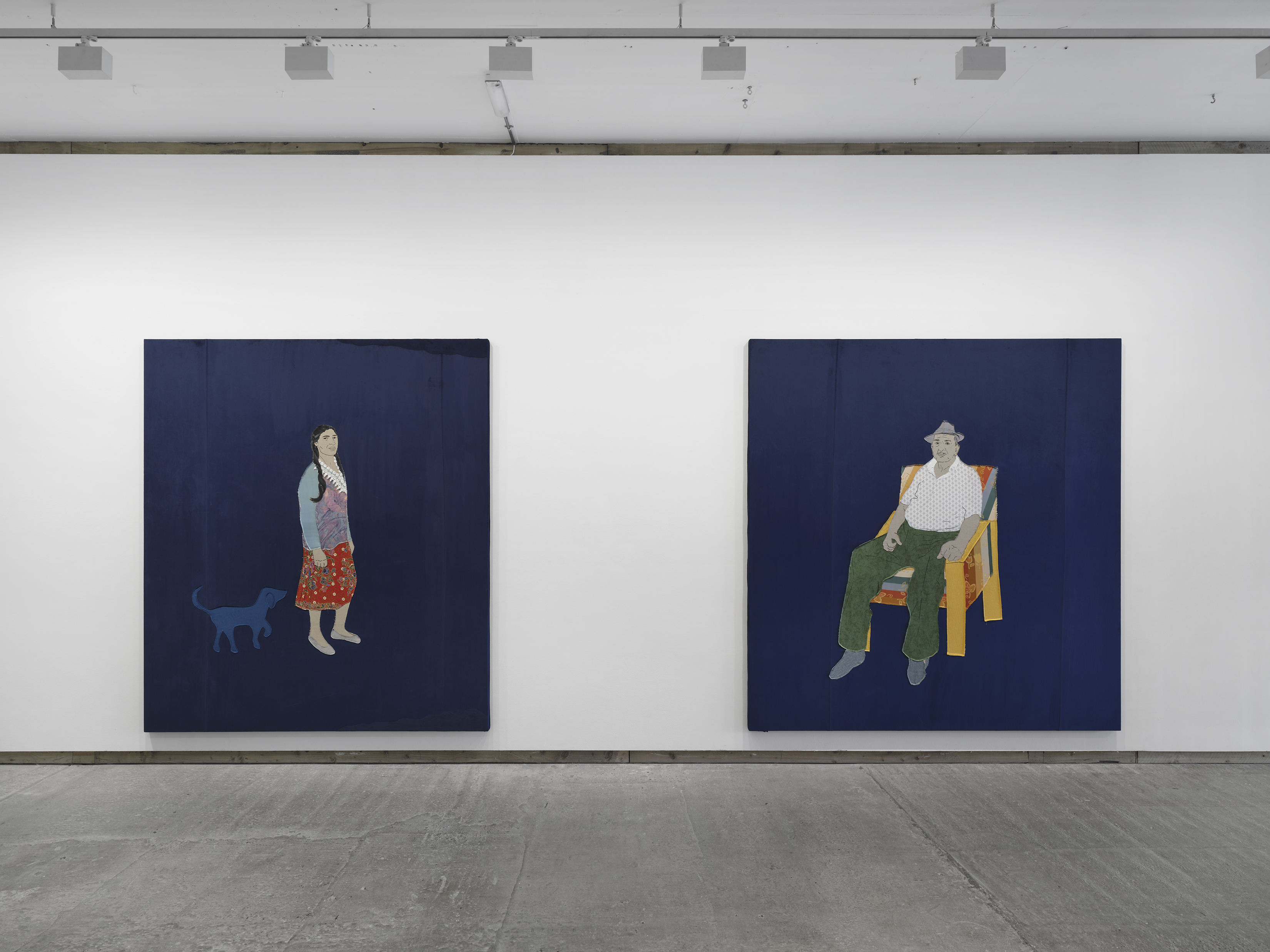


Courtesy of the artist, Frith Street Gallery and Ben Westoby
Frith Street Gallery, 17–18 Golden Square, London
15 September – 11 November 2023
Those who had the opportunity to attend the 59th Venice Biennale last year will remember the beauty of the Polish Pavilion. The Romani artist, educator, and activist Małgorzata Mirga-Tas (b. 1978, Zakopane) covered the walls with textile collages, depicting astronomical motifs, biblical parables, and other religious, literary, and secular motives, to show Romani communities in a dignified and empowered framework.
I remember the feeling produced when entering the big, white building of the Polish Pavilion, and finding the large walls of the interior covered with the colourful textiles of Mirga-Tas, as though I had entered a temple or sacred place. It was no surprise to learn that these textile collages were created from frescoes, painted in the Palazzo Schifanoia in Ferrara, Italy during the Renaissance. The art historian Aby Warburg used these frescoes to articulate his argument about the anachronistic condition of the history of art, and to formulate his concept of art’s afterlife: the recurrence of artistic motifs through different periods of time, cultures, and geographies.
On the 15 September, the artist’s first exhibition in London opened at Frith Street Gallery Golden Square. The show’s title, Siukar Manusia, translates from Romani into English as 'great' or 'wonderful' people. The exhibition consists of ten large scale images, portraying people who belong to the first post-war generation of the Romani community, as well as their descendants. The artist presents us with a group of dignified and empowered people, but also reminds us that the Roma people are an ethnic group, who have been historically oppressed; victims of persecution and violence, including the massacre of hundreds of thousands during the Holocaust.
Distinct from previous projects, the exhibition in London has a secular, social, and political character, however, somehow the sacred character of the work is not lost. Just as religious, iconographic images transmit spiritual and affective information, the portraits that we encounter here have an inherently intimate character, transmitting stories with all their associated emotions, as if whispering secrets to the viewer.
There is an interaction between photography, painting, collage, and textiles. Each person is posed as if they are looking at a camera. The portraits are based upon photographs sourced from family archives. Using the same neutral deep blue background, capture the pride of people who are of personal relevance to Mirga-Tas, including factory workers, activists, musicians, and concentration camp survivors. These textile collages have been sewn from discarded, second-hand fabrics, as well as clothes, sheets, and curtains collected from family and friends. This emphasises the idea that these images, made of interwoven everyday materials, contain embodied histories of the people who used and wore them, while giving a new life to these materials.
Extending an ongoing artistic and political research practice, Mirga-Tas illustrates and enacts an argument about the power of memory, of history, and the stories that we forget; of accounts that have been marginalised in hegemonic Western historical narratives, of the importance of remembering our ancestors, and of the echo of the past and its repercussions on those who are alive today. In other words, the artist presents us with an artistic proposal on the inexhaustible theme of time. Materialising as images, illustrations, and pictorial narratives, but also as an artistic and political instrument, a mechanism of spiritual transformation, change, and social activism.
Paula Zambrano
Curator of Programmes
Frith Street Gallery
17–18 Golden Square, London, W1F 9JJ
Opening Times: Tuesday–Friday, 11–6. Saturday, 11–5. Sunday, Closed
Exhibition open until 11 November 2023